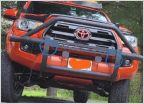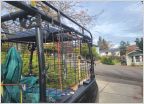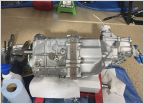-
Welcome to Tacoma World!
You are currently viewing as a guest! To get full-access, you need to register for a FREE account.
As a registered member, you’ll be able to:- Participate in all Tacoma discussion topics
- Communicate privately with other Tacoma owners from around the world
- Post your own photos in our Members Gallery
- Access all special features of the site
Brake Bleed; Does it clean out the caliper pistons?
Discussion in 'General Tacoma Talk' started by xtrchessreal, Jul 17, 2024.


 Bullbar
Bullbar My bed security solution
My bed security solution Question for someone who has removed and cleaned a transmission.
Question for someone who has removed and cleaned a transmission. How do you track when your next oil change is due?
How do you track when your next oil change is due? How to Install? (Pls need help :[ )
How to Install? (Pls need help :[ ) Cracks in brake pads, should I replace?
Cracks in brake pads, should I replace?















































































